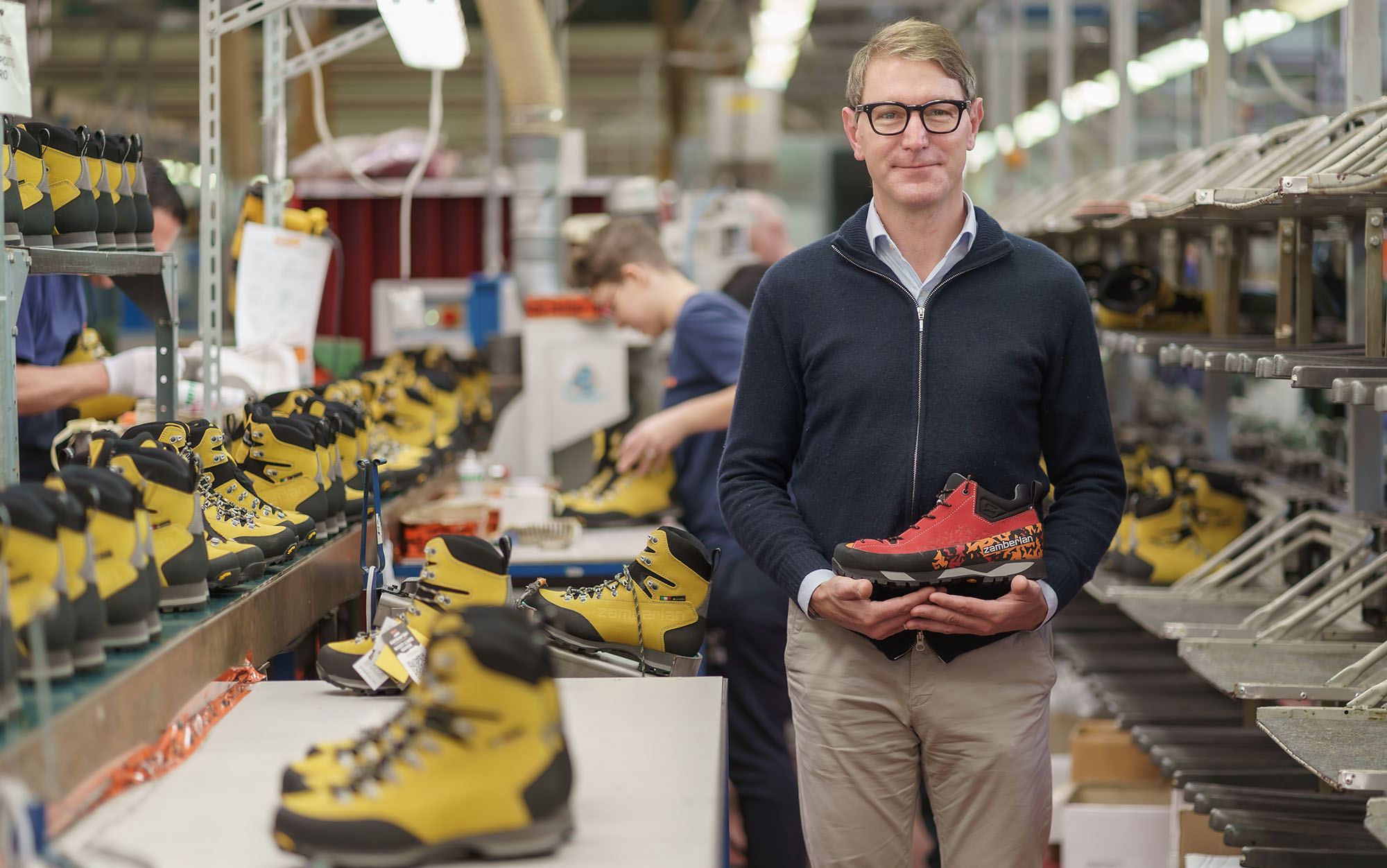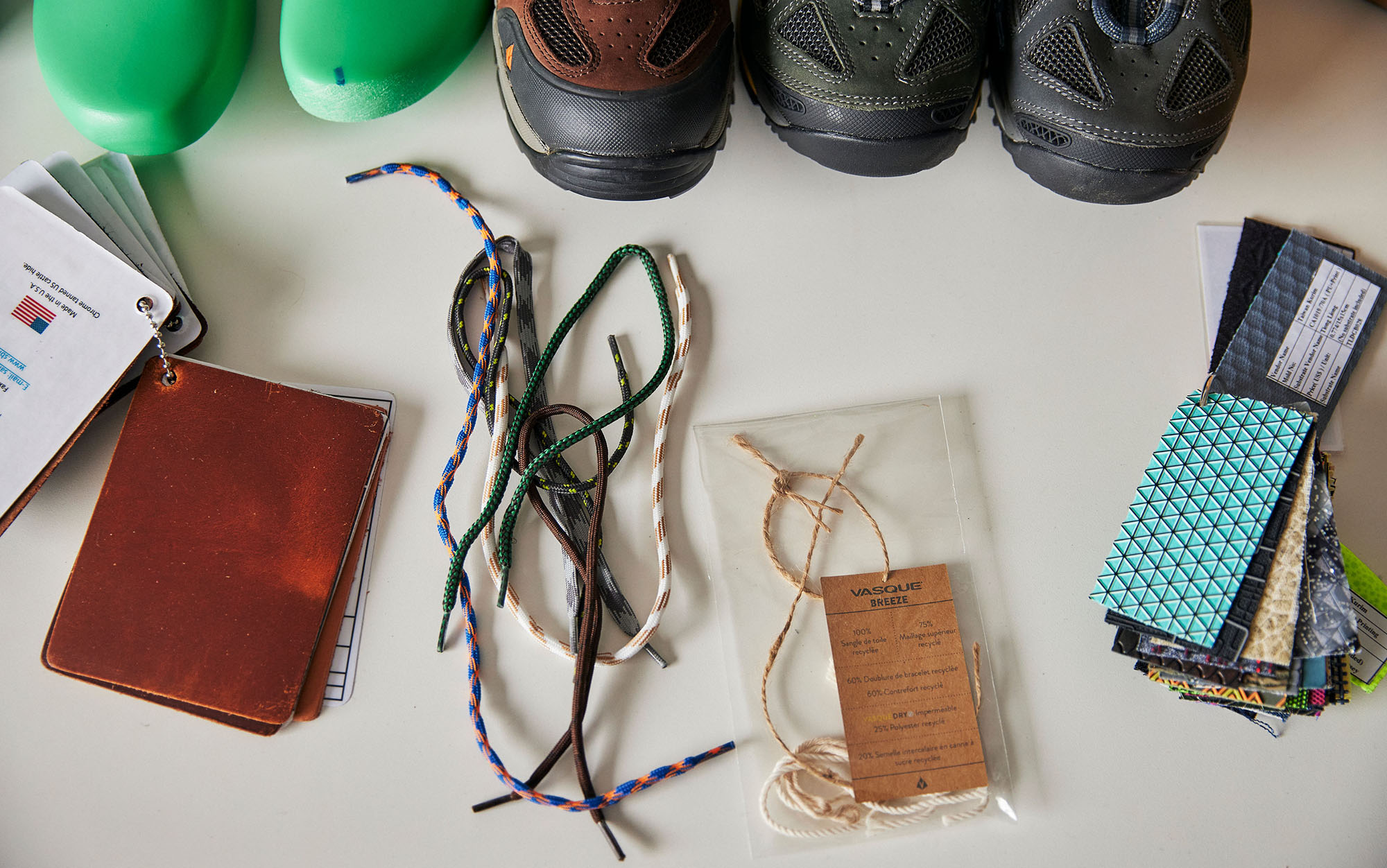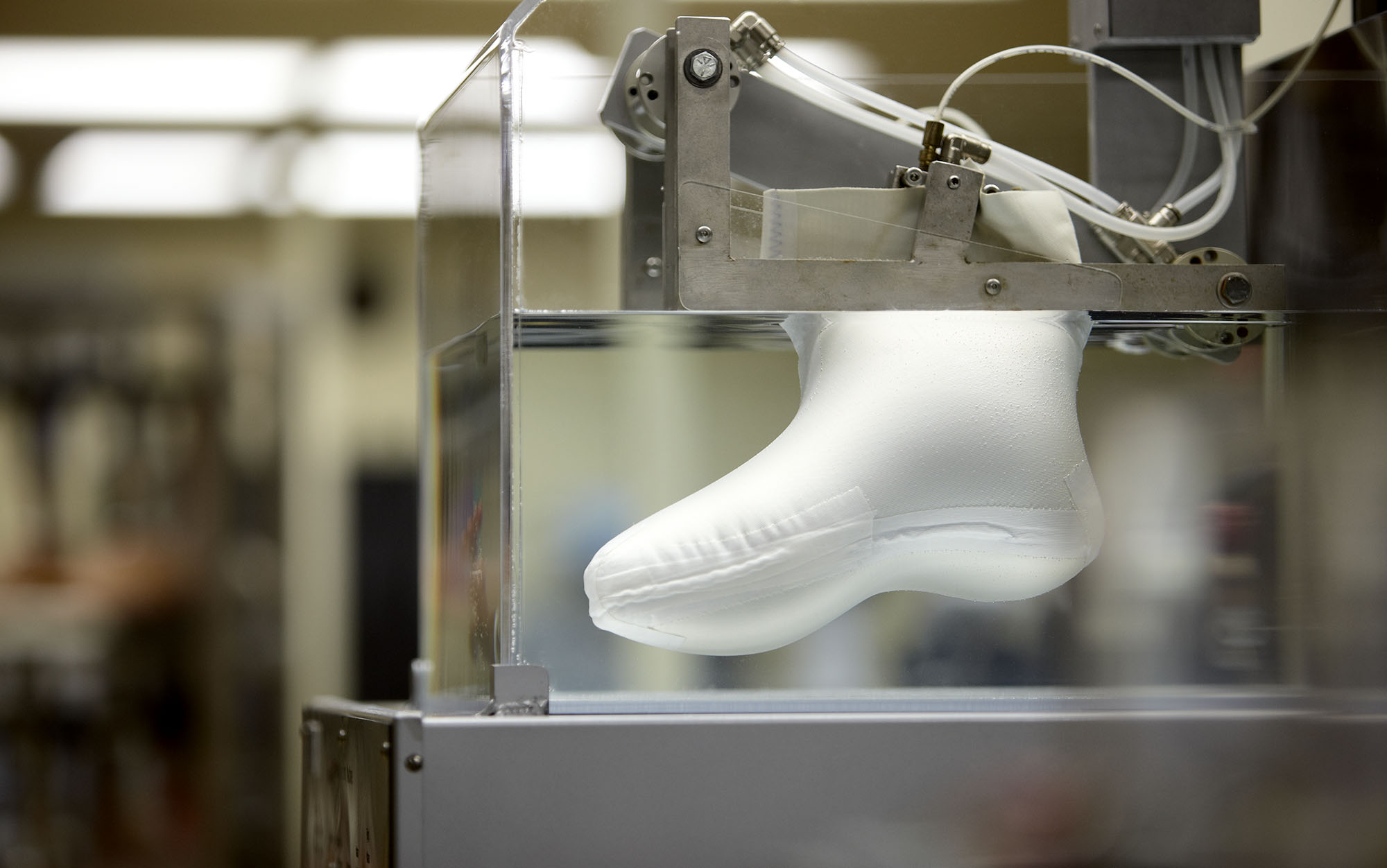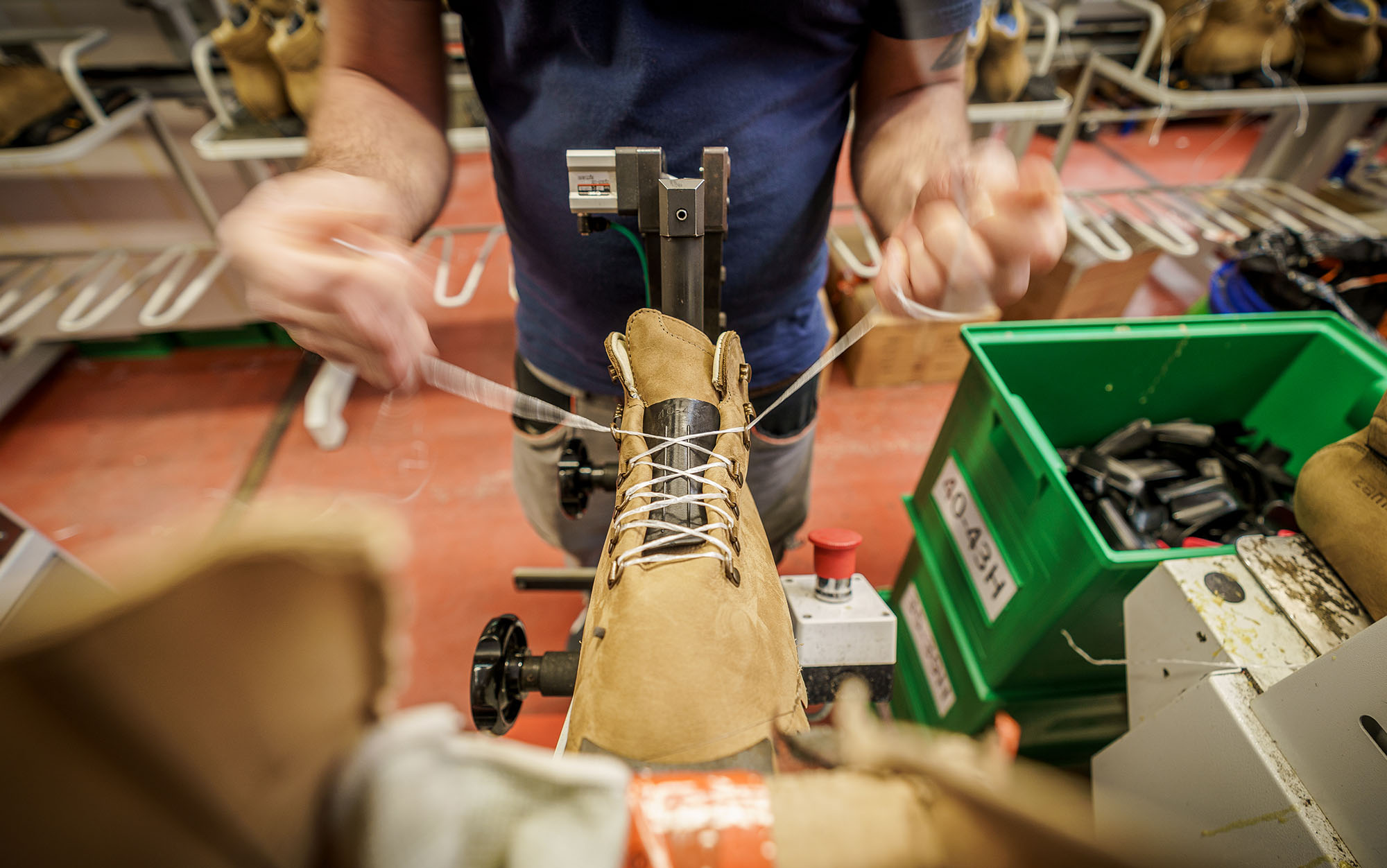We may earn revenue from the products available on this page and participate in affiliate programs. Learn More ›
Hiking boot brands have been perfecting the alchemy of truly great footwear for decades. Some of it is about staying on top of the technical side: the right Vibram rubber with just-so lugs, a midsole that both cushions the foot and protects against the ground, a durable yet breathable upper. But the art of bootmaking — shaping a shoe to both support and protect a foot — is often more art than science, with companies spending decades on R&D and testing to create the perfect fit. Outdoor Life has tested dozens of hiking boots, from winter-ready models to lightweight minimalist versions to leather boots built to last a lifetime. In that time, a few hiking boot brands have stood out to us for their exceptional quality and craftsmanship.
The Best Hiking Boot Brands
Lowa
Lowa has been making boots since 1923 and they’re known for making supportive boots that require minimal break in time. Their Renegade won the best overall award in our best hiking boots survey.
Asolo
Asolo, an Italian bootmaking company, based out of the Dolomites, is known for their technical footwear that’s ready for the most challenging mountain conditions. Their Eldos boots are our pick for the best waterproof hiking boots for sufferfests.
Danner
Since 1932, Danner has been making tough yet comfortable boots for everyone from loggers to backpackers to frontcountry use. Their Arctic 600s are our best winter hiking boot.
KEEN
KEEN’s wide-fitting hiking boots have long had a dedicated following among hikers and backpackers who struggle with fit. Their Targhee model was our pick as the best hiking shoe for wide feet.
Zamberlan
Zamberlan, another Italian bootmaker in the Dolomites, is known for their extremely comfortable leather boots. The 1996 Vioz was the most comfortable pick in our test of the best waterproof hiking boots.
Merrell
Merrell has a hard-won reputation as one of the most affordable quality hiking boots on the market. Their Moab, an industry leader, was our budget pick for best hiking boots.
Oboz
A relative newcomer to the market, Oboz (their first boot came out in 2008), is based out of Bozeman. Oboz has become a serious player in the world of hiking and backpacking boots. Their Bangtail was my best value pick for best winter hiking boots.
Vasque
Vasque, an offshoot of Red Wing Shoe Company, was one of the first American shoe manufacturers to create hiking boots, back in 1964. Their Breeze was our pick for the best waterproof hiking boot.
To better understand how the best hiking boot brands tick, I chatted with some of the experts behind Asolo, Merrell, Vasque, and Zamberlan.
The Best Hiking Boot Brands: What Makes Them Tick
The Birth of the Hiking Boot
It’s hard to believe now, but there was a time when boots weren’t designed specifically for hiking. There were thick, leather work boots, a few mountaineering and cowboy boots, and not much else. While hiking and mountaineering started to gain a cult following in Europe in the nineteenth century, it wasn’t until the second half of the twentieth century that it started to pick up steam in the United States.
For Asolo, it started in 1975 with Giancarlo Tanzi, who was working for a ski boot company in the small Italian village of Asolo. He wanted to try something new, combining the traditional leather mountaineering boots of yore with newer fabrics and textiles to create footwear that was lighter and more flexible (he also created the first plastic mountaineering boot).
Marco Zamberlan told me that his grandfather was the one to start their boot company, back in 1929, also in northern Italy. “He had been working for a shoe repair shop,” Marco says. “But due to his passion, he decided to use his experience to make products that he and his friends could use to climb mountains.”

The Italians weren’t the only ones starting to catch on to this untapped market for hiking boots. When WD Sweasy, head of the Redwing Shoe Company, went to Europe in 1964 he witnessed a hiking craze sweeping the continent, Vasque Marketing Director Joe Peters told me. Merrell’s inspiration was a bit closer to home: Randy Merrell, who had been making custom cowboy boots, partnered with two ski executives, Clark Matis and John Schweizer, quickly realizing that consumers wanted lighter options than what was currently available.
How the Best Hiking Boot Brands Build Boots
While the shape of the human foot might not have changed much in the last 50 years, the way that people explore and enjoy the outdoors has, and the hiking boot brands I spoke to see themselves as at the forefront of recognizing and responding to that change. Time and again they told me that their conversations with retailers, consumers, and focus groups was one of the primary drivers of how they went about updating an existing boot or designing a new one from scratch.
For Zamberlan, it’s about understanding first what the customer is going to do with the boot. “Then we start to work around the design, the materials, the midsole, and so on, in order to make the boot properly for the end user,” Marco says. For other brands, consumer feedback plays an even bigger role.
“The partnership between product creation and marketing is super strong,” Peters says. “Vasque has an open-dialogue with end users to help guide us in developing the most appropriate footwear for what they’re going outside to do.”

Asolo, who has been using feedback from retailers and distributors for years as their jumping off point for creating new boot designs, recently started sharing ideas with their social media followers. “If they give us the green light, we start the development of the boot,” says Luca Zanatta, part of the third generation to manage the Asolo brand. The Asolo team then conducts a series of interviews to understand the problem or need that the new boot will address, which is then adapted to their standard boot structure. After that, the designers tweak and correct the shape based on feedback from the user group the boot is intended for—a process that takes anywhere from six to eight months.
The same goes for updating a popular model of an existing hiking boot. To update their popular Moab hiking boot, Merrell took a wide range of opinions into consideration. Shaun Bohnsack, Vice President of Product Management told me that in addition to reading reviews and talking to consumers, they also do global research studies on hiking, to understand how consumers are changing the way they approach the category, and test out ideas with athletes before putting them into upcoming prototypes. “It’s a holistic view on what we want to improve but also on what we don’t want to change,” says Bohnsack.
How the Best Hiking Boot Brands Test Products
Several of the hiking boot brands I spoke with were founded in mountain towns, and still use their backyard as their primary testing ground. “We are in the middle of the mountains, surrounded by the small Dolomites,” Marco says. “We have a community here working for the factory and our local shop, and this is the first step for each product. We also have a group of mountain guides, especially in the Mont Blanc area that we send prototypes to.” Asolo also uses mountain guides in the Dolomites as their main network of testers.

Vasque’s testers are more varied in their outdoor pursuits, ranging from people climbing fourteeners to day hikers in Seattle, Utah, and the Northeast, to account for how needs and perspectives vary across a range of climates. In addition to working with testers out in the field over multiple months, Merrell also focuses on testing using third-party labs. “It’s not just shoe material testing,” says Bohnsack. “But actual lab testing that replicates traction concerns and needs durability with robotics.”
Finding Your Boot
As anyone who has tried out a new hiking boot knows, there is a lot of variation—in materials, shape, and purpose—to sift through. So how do you find your perfect fit?
For the team at Vasque, it starts with a shoe that matches your environment. “Your feet and your entire body are going to feel a lot better if you wear the appropriate footwear for the adventure,” says Peters. That means identifying the climate you live in, and selecting the characteristics you are looking for in a boot based on that, whether it be great traction, waterproofing, or ankle protection.
Zamberlan relies heavily on the staff that sell their boots to educate customers on the differences in quality and performance between each model, which they provide educational material for. (Their dedication to this education practice is so strong that they spent more time and energy during our interview showing and explaining new products to me than almost anyone else I talked to.) For them, this strategy is sometimes complicated by turnover in staff as well as the sheer number of stores around the world that sell their product.

Asolo takes a more minimalist approach to this issue: They aim to make their boot right the first time, and then commit to altering it as little as possible. Some of their most iconic shoes haven’t changed their fit or structure in over twenty-five years. “Every time we are going to make a certain change we need to keep in our mind what not to lose, since it’s been working well for forty years,” says Asolo Chairman Marco Zanatta.
Vasque is starting to shift in this direction as well. With the Breeze—their most popular boot—they noticed that, over time, the feedback they were getting was leading them back to the structure and fit of the original iteration.
“What you’re going to see from Vasque in the future is these firm franchises,” says Peters. “New versions will still use new technologies but you’re not going to see us taking a boot that people love and discontinuing it or changing it.”
For them, this has been part of a larger trend of streamlining the number of different boots they offer as well. “Consumers don’t want you to change the stitching or the fit, and that’s a really healthy friction with the pressure of continuous evolution and utilizing the latest and greatest technologies,” Peters told me.
Merrell, in addition to maintaining the shape and fit of their popular Moab shoe, also focuses on reaching underserved parts of the outdoor population. In addition to extending sizes all the way out to a men’s 15, they also test with those individuals as well.
“Much to the disagreement with our internal team who likes everything to be the same,” says Merrell’s Shaun Bohnsack. “So it isn’t just a men’s nine sample size. That makes it harder to quantify some of the feedback, but it actually is more representative of the overall population.”
They also focus heavily on their wide sizes, which, unusually, sells just as well as their regular fit for some models. “It’s a big investment on our side because of the machinery, the tooling to have a different outsole,” says Bohnsack, “Fit is really one of those things that we want to be known for.”
This continual focus on fit, perfecting it and maintaining it, is something that all the brands see as pivotal for the future.
“Honestly, there is so much growth in the outdoors,” says Merrell’s Nathan Buelow. “So many more people getting out hiking. It’s an investment on our end, but it’s rewarded by the customers: they’ve changed so much and there’s such a great breadth of people now.”
FAQs
There are many excellent hiking boot brands to choose from, including Asolo, Danner, KEEN, La Sportiva, Lowa, Oboz, Merrell, Salomon, Vasque, and Zamberlan.
While the best hiking boot brands are not typically available in the shoe sections of department stores, you can almost always find a wide array of options to choose from at outdoor-specific stores like Cabelas, REI, Dick’s Sporting Goods, and Big 5 Sporting Goods.
Hiking boots are significantly more durable than road running or trail running shoes, but most will not last longer than a handful of seasons. The most durable hiking boots can be resoled; if this is a priority for you, look for brands that offer in-house resoling as a service.
Hiking boots do not have a guaranteed IP waterproof rating. That being said, there are a few ways to find out if the hiking boots you are looking at will truly be waterproof when push comes to shove. The first is to check out Outdoor Life’s story on the best waterproof hiking boots, where we put some of the top models from the best brands to the test. If the boot you’re considering wasn’t included in our test, check to see if it has a waterproof lining inside of the boot in addition to a water-resistant finish on the upper. Finally, consider the pros and cons of so-called breathable waterproof hiking boots. While these hiking boots tend to let more water in than truly waterproof hiking boot, if you’re prone to building up a serious sweat, and plan to go hiking in warmer climates, then the tradeoff will be worth it.
Final Thoughts on The Best Hiking Boot Brands
From winter hiking boots to minimalist running shoes, from the best insoles to the best beginner’s hiking shoes, the Outdoor Life gear team has spent a lot of time diving into what makes for truly great footwear. And while there are commonalities all the best hiking boot brands seem to share — decades of bootmaking, careful attention to consumer feedback, a rigorous testing process — the best boot for each individual at the end of the day is the one that best fits their foot. And the only way to figure out which one is right for you is practice and experience.
